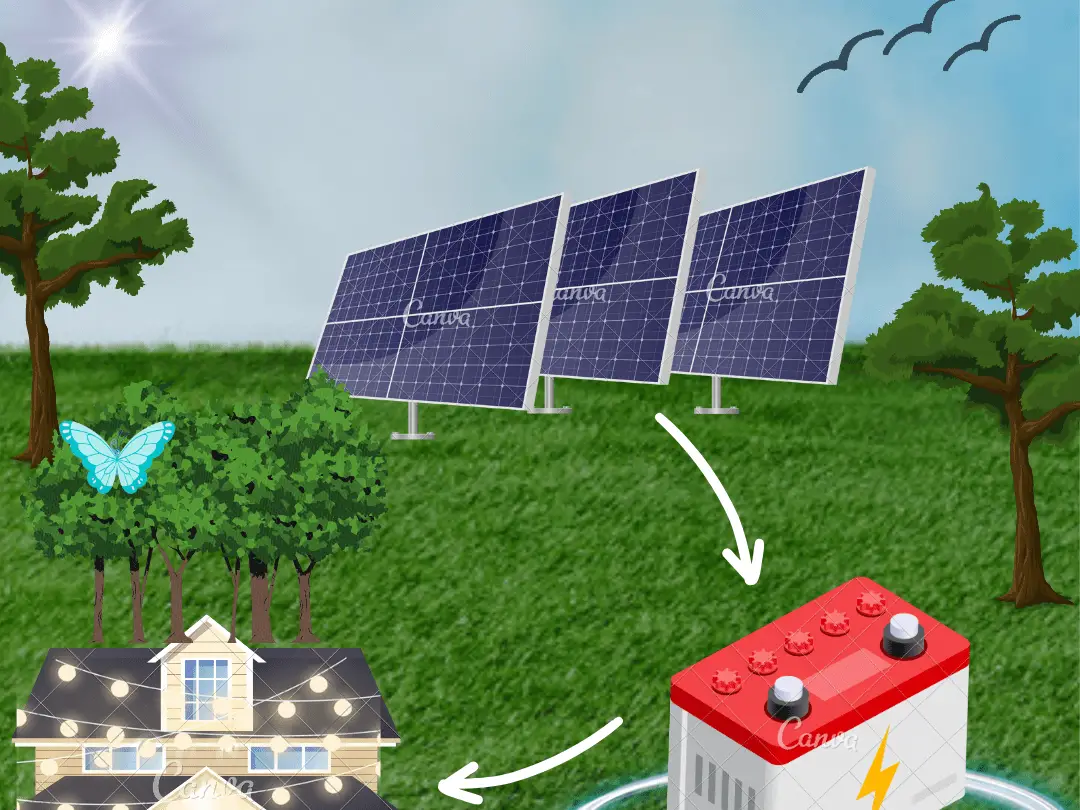Contents
Introduction:
The solar system has countless planetary systems akin to our own founded. In the immense expanse of the cosmos hosting planets circling a central star. Referred to as the “solar system,” our specific planetary arrangement derives. Its name from our utilization of the term “solar” to describe elements related to our star. The solar system consists of the Sun, which acts as its gravitational focal point. And a host of celestial bodies that orbit around it. Standing out among these entities are the eight planets. Solar power has gained widespread acceptance on a global scale due to several compelling reasons, such as achieving grid independence. Embracing clean energy, implementing net metering, and reducing electricity costs.
In countries like Pakistan, India, Bangladesh, Nigeria, and various nations in Africa, where power grids can be unreliable. Solar Solutions serve a crucial role in ensuring uninterrupted electricity supply during frequent outages. SkyElectric effectively addresses the issue of load-shedding while bringing the advantages of solar solutions. Enjoyed by households and businesses in the Western world.

What is the Functioning of the Solar System?
Solar panels serve as a vital means of harnessing clean, renewable energy from sunlight. And converting it into electricity to power various electrical loads. These panels consist of multiple solar cells composed of silicon, and phosphorous (for the negative charge). And boron (for the positive charge). When photons are absorbed by the solar panels it results in a directional current known as the Photovoltaic Effect. They initiate an electric current by releasing electrons from their atomic orbits into the electric field generated by the cells.
When utilized in the home at night, in grid-connected setups, a well-balanced solar array generates power during the day. The solar system produces surplus power beyond their home’s needs, so the net metering program solar owner gets compensated. Conversely, off-grid solar applications require additional components like a battery bank, charge controller, and often an inverter. The solar array sends direct current (DC) electricity to the battery bank through the charge controller. Which converts the DC into alternating current (AC) suitable for non-DC appliances. Through the power drawn from the battery bank to the inverter.
Solar system panels array meet the most demanding size of electrical load requirements, with the aid of an inverter. Commercial buildings, recreational vehicles, boats, remote cabins, cottages, traffic controls, telecommunications equipment, oil and gas flow monitoring, RTU, and SCADA. Where the AC produces harnesses to power homes.
Within a mere hour and a half, the quantity of sunlight that reaches. The Earth’s surface is abundant enough to meet the global energy requirements for an entire year. Solar technologies harness this sunlight and convert it into electrical energy. Employing either photovoltaic (PV) panels or mirrors that concentrate solar radiation. It is stored in batteries or thermal storage systems for future use, this harvested energy is utilized to generate electricity directly.

Exploring Solar Panel Systems
In a world grappling with environmental challenges and seeking sustainable energy solutions, solar system panels have emerged as a beacon of hope and progress. These systems harness the boundless energy of the sun to provide clean and renewable power for a multitude of applications. This article delves into the world of solar panel systems, their mechanics, benefits, and their role in shaping a greener future.
The Science Behind Solar Panels
At the heart of a solar panel system lies the ingenious science of photovoltaics. Photovoltaic cells, commonly known as solar cells, are the building blocks of these systems. These cells are typically made from silicon, a semiconductor material. When sunlight strikes these cells, it excites the electrons within the material, generating an electric current. This phenomenon, known as the photovoltaic effect, is the fundamental process by which solar panels convert sunlight into electricity.
Solar panels are composed of numerous interconnected solar cells, often arranged in a grid-like pattern. These cells are encapsulated in protective materials, including tempered glass and weather-resistant polymers, to ensure durability and longevity. The resulting solar modules can be installed on rooftops, mounted on the ground, integrated into building materials, or even deployed in vast solar farms.
Advantages of Solar Panel Systems
The proliferation of solar panel systems is driven by the range of compelling advantages that they offer:
- Renewable Energy Source: Unlike fossil fuels, solar energy is renewable and inexhaustible. As long as the sun continues to shine, we have a continuous and sustainable source of power.
- Environmentally Friendly: Solar power generation produces minimal to no greenhouse gas emissions, reducing air pollution and combating climate change.
- Energy Independence: Solar panel systems empower individuals, businesses, and even entire nations to generate their electricity, reducing reliance on imported energy sources and enhancing energy security.
- Low Operating Costs: Solar panels have minimal operating and maintenance costs. Once installed, they require only occasional cleaning and inspections to ensure optimal performance.
- Scalability: Solar panel systems can be tailored to fit a wide range of needs, from small residential installations to large-scale commercial and industrial applications.
- Reduced Electricity Bills: By generating their electricity, users can significantly reduce or even eliminate their monthly electricity bills, leading to long-term cost savings.
- Long Lifespan: Solar system panels are designed to be durable and have a lifespan of 25 to 30 years or more, providing a reliable and stable energy source over an extended period.

The Installation Process
The installation of a solar panel system typically involves several key steps:
- Site Assessment: Solar system experts assess the site’s solar potential, considering factors like sunlight exposure, shading, and available space.
- Design: Engineers design the system layout, considering energy needs, available roof or ground space, and local regulations.
- Permitting: Necessary permits are obtained from local authorities to ensure compliance with building codes and safety standards.
- Installation: Solar system panels are mounted on rooftops or ground structures, and electrical components, such as inverters and wiring, are integrated into the system.
- Connection: The solar system is connected to the electrical grid or an energy storage solution, allowing excess energy to be fed back into the grid or stored for later use.
Innovations Driving Solar Panel Systems Forward
The evolution of solar panel systems is a testament to human ingenuity and the drive to harness the power of the sun in increasingly efficient and innovative ways:
High-Efficiency Panels: Research and development efforts have led to the creation of high-efficiency solar system panels that can convert a larger percentage of sunlight into electricity. These panels maximize energy output even in limited space.
Thin-Film Technology: Thin-film solar panels utilize lightweight and flexible materials, allowing for more versatile installation options. These panels are particularly suitable for unconventional surfaces and portable applications.
Bifacial Panels: Bifacial solar system panels capture sunlight from both sides, increasing their overall energy production. These panels can reflect sunlight off surrounding surfaces, further enhancing efficiency.
Solar Tracking Systems: Solar tracking systems tilt and follow the sun’s path throughout the day, optimizing the angle of sunlight exposure. This technology boosts energy generation by maximizing the panels’ direct exposure to sunlight.
Building-Integrated Photovoltaics (BIPV): BIPV seamlessly integrates solar system panels into building materials, such as roofing and facades, allowing structures to generate energy without compromising aesthetics.
Energy Storage Solutions:
Coupling solar panel systems with energy storage solutions, such as batteries, enables the capture and storage of excess energy for use during cloudy periods or at night, enhancing system reliability.
Community Solar Projects: Community solar initiatives allow multiple households or businesses to share the benefits of a single solar array, making solar energy accessible to those who might not be able to install panels on their properties.
Solar-Powered Transportation: Solar system panels are finding their way onto vehicles, including cars, buses, and even planes. These panels can assist in charging batteries and reducing reliance on conventional fuel sources.
Solar-Powered Water Solutions: Solar system panels are also being used to power water pumps, desalination plants, and irrigation solar systems in areas with limited access to electricity, addressing critical water and energy challenges.
Solar in Space: Beyond Earth, solar panel systems are utilized on spacecraft and satellites to power their onboard systems and instruments, demonstrating the versatility of solar energy technology.
Overcoming Challenges
While solar panel systems offer numerous advantages, they also face certain challenges:
- Intermittency: Solar system energy production is dependent on sunlight, making it intermittent and challenging to provide consistent power during nighttime or cloudy days.
- Initial Costs: While the long-term savings are substantial, the upfront costs of purchasing and installing solar panels can be a barrier for some individuals and businesses.
- Space Requirements: Solar panels require adequate space with unobstructed sunlight exposure, which may not be feasible for every location.
- Energy Storage: Storing excess energy for use during non-sunny periods requires efficient and affordable battery technology.
- Regulatory and Grid Integration: Connecting solar panel systems to the electrical grid involves regulatory procedures and considerations for grid stability.
A Catalyst for a Sustainable Future
Solar panel systems stand as an emblem of human innovation, determination, and commitment to a cleaner planet. As technology advances and economies of scale drive costs down, solar energy becomes increasingly accessible and viable. These systems are not just about energy generation but also symbolize a shift towards sustainable practices, reduced carbon footprints, and more resilient energy infrastructure.
Governments, industries, and individuals around the world are recognizing the potential of solar panel systems to revolutionize energy production. Incentives, subsidies, and policies are being implemented to encourage adoption, and research continues to refine the technology’s efficiency and affordability.
The sun, an eternal and potent source of energy, holds the key to a brighter future. With solar panel systems at the forefront, we can usher in an era of clean, abundant, and sustainable energy for generations to come.
A Bright Future Ahead
Solar panel systems stand at the forefront of the clean energy revolution, presenting an opportunity to transition to a more sustainable and environmentally responsible energy landscape. As technology continues to advance, solar panels are becoming more efficient and affordable, further driving their adoption on a global scale. With their ability to generate electricity silently, without emissions, and in harmony with nature, solar panel systems have the potential to illuminate a brighter and greener future for generations to come.
